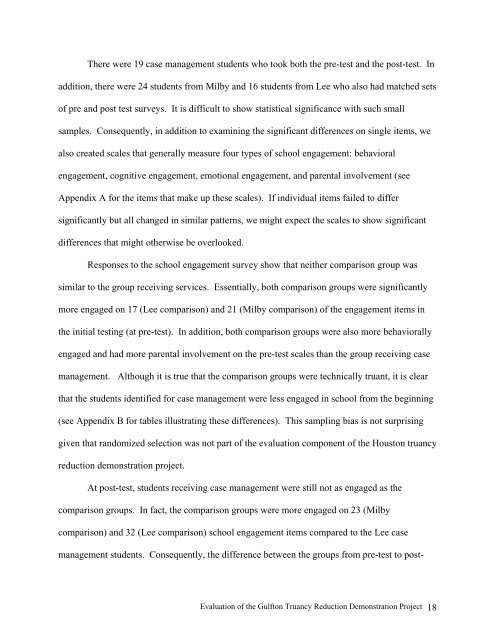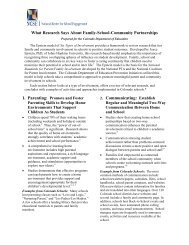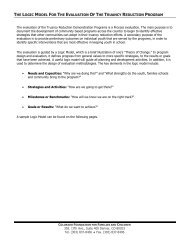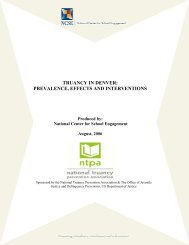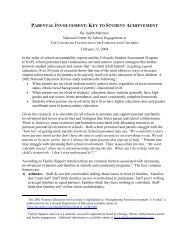Gulfton Truancy Reduction Demonstration Project, Houston, TX
Gulfton Truancy Reduction Demonstration Project, Houston, TX
Gulfton Truancy Reduction Demonstration Project, Houston, TX
You also want an ePaper? Increase the reach of your titles
YUMPU automatically turns print PDFs into web optimized ePapers that Google loves.
There were 19 case management students who took both the pre-test and the post-test. In<br />
addition, there were 24 students from Milby and 16 students from Lee who also had matched sets<br />
of pre and post test surveys. It is difficult to show statistical significance with such small<br />
samples. Consequently, in addition to examining the significant differences on single items, we<br />
also created scales that generally measure four types of school engagement: behavioral<br />
engagement, cognitive engagement, emotional engagement, and parental involvement (see<br />
Appendix A for the items that make up these scales). If individual items failed to differ<br />
significantly but all changed in similar patterns, we might expect the scales to show significant<br />
differences that might otherwise be overlooked.<br />
Responses to the school engagement survey show that neither comparison group was<br />
similar to the group receiving services. Essentially, both comparison groups were significantly<br />
more engaged on 17 (Lee comparison) and 21 (Milby comparison) of the engagement items in<br />
the initial testing (at pre-test). In addition, both comparison groups were also more behaviorally<br />
engaged and had more parental involvement on the pre-test scales than the group receiving case<br />
management. Although it is true that the comparison groups were technically truant, it is clear<br />
that the students identified for case management were less engaged in school from the beginning<br />
(see Appendix B for tables illustrating these differences). This sampling bias is not surprising<br />
given that randomized selection was not part of the evaluation component of the <strong>Houston</strong> truancy<br />
reduction demonstration project.<br />
At post-test, students receiving case management were still not as engaged as the<br />
comparison groups. In fact, the comparison groups were more engaged on 23 (Milby<br />
comparison) and 32 (Lee comparison) school engagement items compared to the Lee case<br />
management students. Consequently, the difference between the groups from pre-test to post-<br />
Evaluation of the <strong>Gulfton</strong> <strong>Truancy</strong> <strong>Reduction</strong> <strong>Demonstration</strong> <strong>Project</strong> 18


